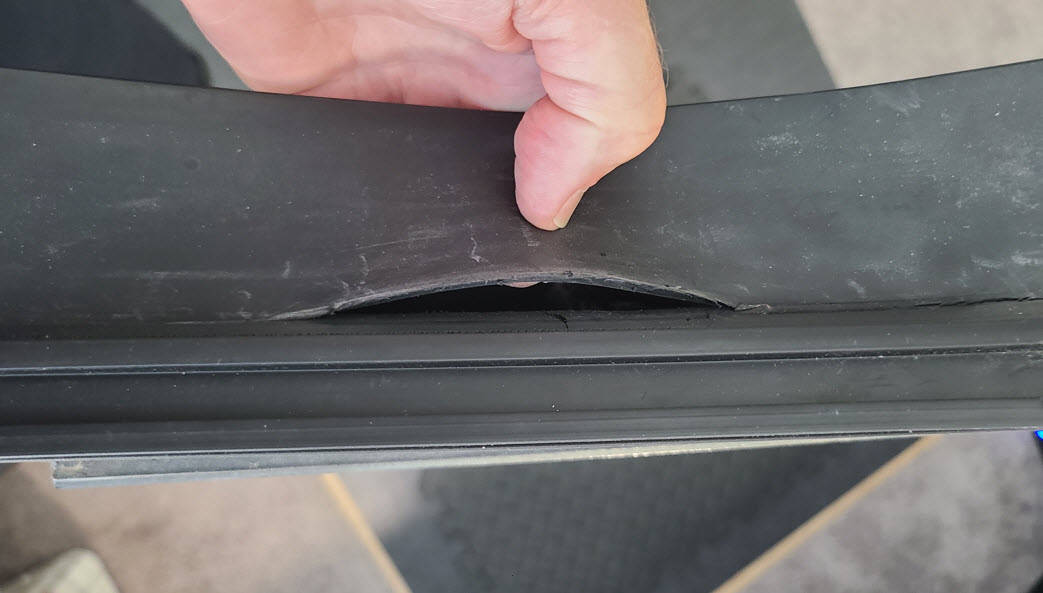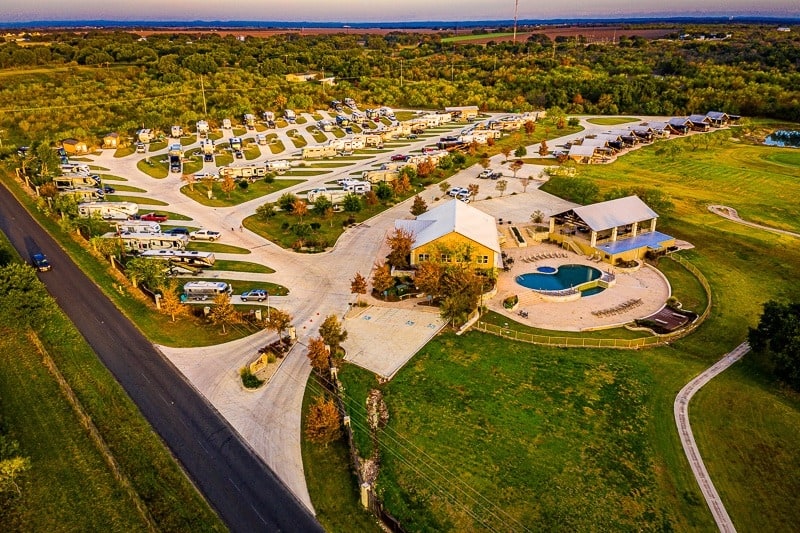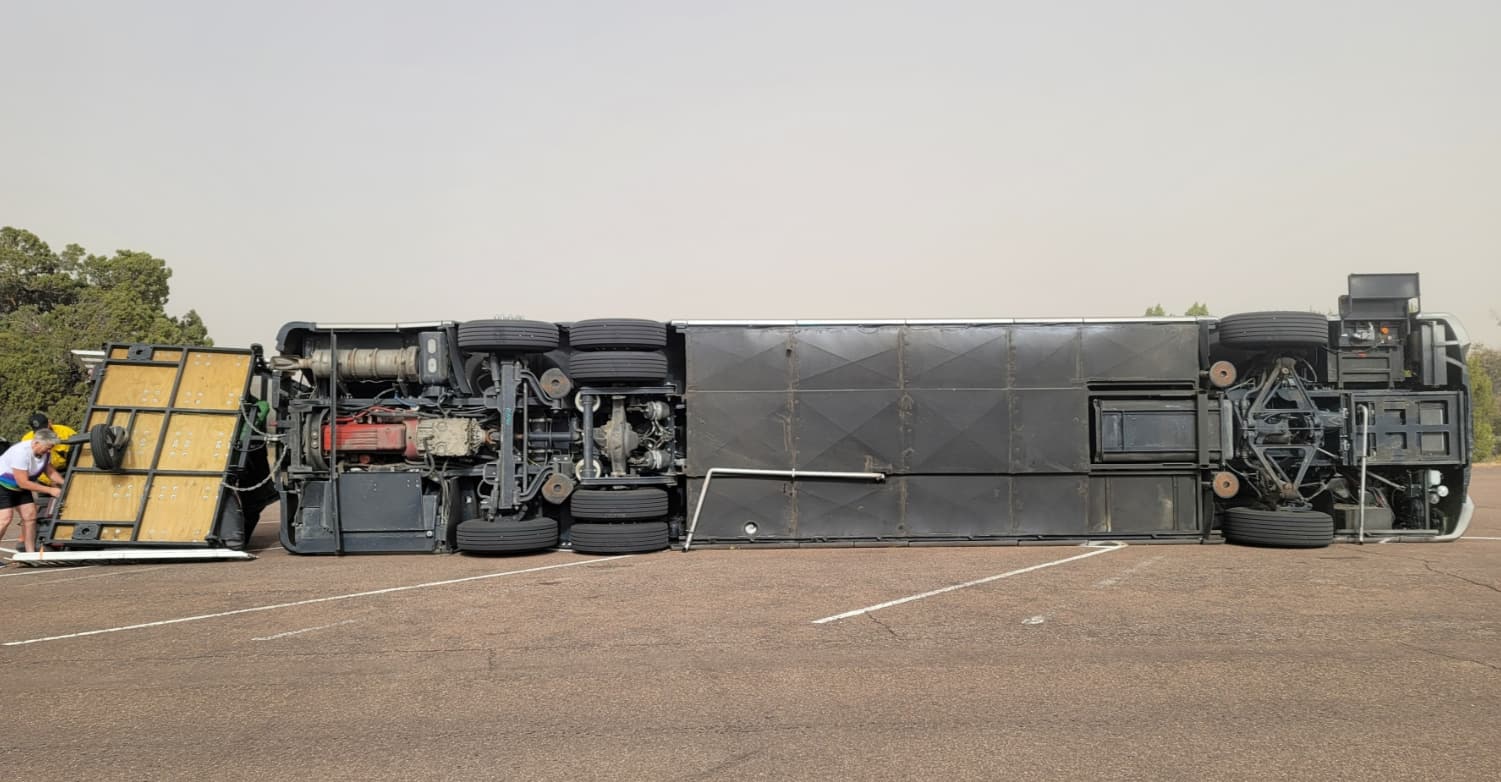An RV awning is an extendable cloth that can be used to provide shade to users of the RV. They can extend out from the RV to 14 feet or more.
What are camper awnings made of?
There are different fabrics used to make camper awnings, but the most commonly used are vinyl and acrylic.
Acrylic awnings dry faster because they allow for air to flow through it, and it is breathable. It is important to note that though acrylic awnings are water repellent, they are not waterproof. Any contact to its underside when it is wet will cause water to seep through. Acrylics are also not durable enough to handle scrubbing, so they must be cleaned by a thorough hosing down to get rid of any dirt in the fibers.
Vinyl is much tougher than acrylic and is waterproof. However, it doesn’t dry as quickly as acrylic because it is not as breathable as acrylic. Also, even though it is mildew resistant, vinyl can develop mildew growths, especially if it isn’t completely dried before it is stored. If mildew does grow on your vinyl awning, commercial cleaners are capable of removing it with ease.
How much does it cost to replace RV awning?
RV awnings, as a vehicle extension, provides priceless functions during vacations. They protect the interior from heating by keeping direct sunlight away from the RV’s side window. Also, awnings provide temporary shade in the outdoors for picnics and dinners.
The frequent use of RV awnings makes them susceptible to damage over time. Repairing or replacing an awning is tricky and expensive. Some may choose to DIY the repairs but hiring technical persons to handle the repairs may prove to worth your while.
The cost of replacing the parts of your RV awnings can be decided by numerous variables:
- Fabric: the usual price for replacing the awning fabrics range from approximately $350 to $1,000. A partial or total replacement of the awning fabric will depend upon how severe the damage suffered by your awning is. A partial replacement could save time and money, but it could also prove to be a waste of time and money if the damage required a total replacement. It might be necessary to replace awning fabric if it isn’t good enough to shade the side window and the outdoor area it covers.
- Retractable arms: these mechanical devices hold the RV awnings up and manually retract them when needed. Replacing a damaged retractable arm could cost anywhere from $75 to $300. The larger RVs will have larger arms that will be more expensive to fix. The worm gears that withdraw the arms and awnings must be replaced if they are unable to move the awning. It will cost anywhere between $100 and $400 to replace the gears.
- Motor: this will be the most expensive part of the awning to replace and fix. Some motor issues will be resolved with one or two quick fixes, but some issues will require a replacement of a part or the whole motor. The price of a replacement motor will range from $200 to $700.
- Electrical parts: sometimes, the problem with your awning is a blown fuse or a short circuit in the motor. Fixing the electrical system requires the help of a professional electrician. The cost, depending on how bad the fault is, could be anything between $70 to $300.
- Other common problems: the awning can also develop other issues like small leaks as a result of snagging on tree branches or the mechanical parts of the retractable arms. Patching those rifts, with the cost of labor and supplies accounted for as well, could be $100 or more. Stains are another issue that needs to be dealt with by power washing the awning. A power wash usually costs approximately $100.
Some issues may seem easy to handle by yourself but, the best people for the job are the professionals. It may not seem cost-effective in the short-term, but the long-term benefits are much better than hoped for.
What is better vinyl or acrylic awning?
The best choice for RV awnings is usually acrylic fabric.
Acrylic can withstand harsh sunlight, heavy rain, ice and snow and a variety of other harsh weather conditions. Sunbrella is one of the best acrylic awning fabrics around. It quickly dries and can handle UV rays from the sun better than other fabrics. Its breathability makes the air under the awning cooler than vinyl fabrics. Also, since colors and patterns of acrylic awnings are usually woven in and not painted over the surface, the canopy’s design and finish will last much longer, even under harsh weather conditions.
Can I leave my awning out in the rain?
Unless it is necessary, it’s best to put your awning away when it’s raining.
The wind is likely to blow the awning during the rain, and the whipping action is likely to damage the awning. Water on the awning also increases the likelihood of developing mildew on the awning.
Any damage sustained by the awning will not be covered by your insurance company. Awnings are considered to accessories, and that reduces how necessary they are in the eyes of insurance companies.
If the awning must be out during the rain, you can secure it with an RV awning saver clamp to reduce wind damage caused by whipping and make sure your awning isn’t torn off the RV. Using an RV awning tie-down kit also helps the awning withstand more wind than it usually could.
What should I use to clean my awning?
That would depend on how strong your awning is.
Vinyl awnings can be cleaned with commercial cleansers and scrubbers. They are tough enough to withstand considerable force for cleaning but not too much. Dry completely and store in a dry area to prevent the growth of mildew.
Acrylic awnings cannot withstand the force of scrubbing brushes or commercial cleansers. As such, they must be hosed down to clean off any dirt accumulated in the fibers. They will dry faster than vinyl awnings but still need to dry completely to reduce the chances of developing mildew.



